EGCG Disrupts the LIN28B/Let-7 Interaction and Reduces Neuroblastoma Aggressiveness
- PMID: 38732012
- PMCID: PMC11084668
- DOI: 10.3390/ijms25094795
EGCG Disrupts the LIN28B/Let-7 Interaction and Reduces Neuroblastoma Aggressiveness
Abstract
Neuroblastoma (NB) is the most commonly diagnosed extracranial solid tumor in children, accounting for 15% of all childhood cancer deaths. Although the 5-year survival rate of patients with a high-risk disease has increased in recent decades, NB remains a challenge in pediatric oncology, and the identification of novel potential therapeutic targets and agents is an urgent clinical need. The RNA-binding protein LIN28B has been identified as an oncogene in NB and is associated with a poor prognosis. Given that LIN28B acts by negatively regulating the biogenesis of the tumor suppressor let-7 miRNAs, we reasoned that selective interference with the LIN28B/let-7 miRNA interaction would increase let-7 miRNA levels, ultimately leading to reduced NB aggressiveness. Here, we selected (-)-epigallocatechin 3-gallate (EGCG) out of 4959 molecules screened as the molecule with the best inhibitory activity on LIN28B/let-7 miRNA interaction and showed that treatment with PLC/PLGA-PEG nanoparticles containing EGCG (EGCG-NPs) led to an increase in mature let-7 miRNAs and a consequent inhibition of NB cell growth. In addition, EGCG-NP pretreatment reduced the tumorigenic potential of NB cells in vivo. These experiments suggest that the LIN28B/let-7 miRNA axis is a good therapeutic target in NB and that EGCG, which can interfere with this interaction, deserves further preclinical evaluation.
Keywords: (−)-epigallocatechin 3-gallate; AlphaScreen; EGCG; LIN28B/let-7 interaction inhibitors; PLC/PLGA-PEG nanoparticles; differentiation therapy; neuroblastoma; target therapy.
Conflict of interest statement
V.S. is employed by the company Nanomater S.r.l. The remaining authors declare that the research was conducted in the absence of any commercial or financial relationships that could be construed as a potential conflict of interest.
Figures
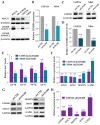
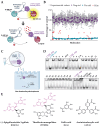
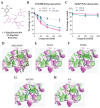
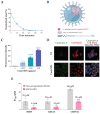
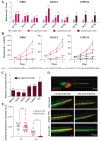
Similar articles
-
Lin28B and Let-7 in the Control of Sympathetic Neurogenesis and Neuroblastoma Development.J Neurosci. 2015 Dec 16;35(50):16531-44. doi: 10.1523/JNEUROSCI.2560-15.2015. J Neurosci. 2015. PMID: 26674877 Free PMC article.
-
Targeting ornithine decarboxylase reverses the LIN28/Let-7 axis and inhibits glycolytic metabolism in neuroblastoma.Oncotarget. 2015 Jan 1;6(1):196-206. doi: 10.18632/oncotarget.2768. Oncotarget. 2015. PMID: 25415050 Free PMC article.
-
LIN28B induces neuroblastoma and enhances MYCN levels via let-7 suppression.Nat Genet. 2012 Nov;44(11):1199-206. doi: 10.1038/ng.2436. Epub 2012 Oct 7. Nat Genet. 2012. PMID: 23042116
-
Lin28/let-7 axis in breast cancer.Mol Biol Rep. 2025 Mar 14;52(1):311. doi: 10.1007/s11033-025-10413-6. Mol Biol Rep. 2025. PMID: 40085362 Review.
-
Aberrant regulation of the LIN28A/LIN28B and let-7 loop in human malignant tumors and its effects on the hallmarks of cancer.Mol Cancer. 2015 Jun 30;14:125. doi: 10.1186/s12943-015-0402-5. Mol Cancer. 2015. PMID: 26123544 Free PMC article. Review.
Cited by
-
Regulation and dysregulation of microRNA - transcription factor axes in differentiation and neuroblastoma.Cell Mol Life Sci. 2025 Aug 8;82(1):304. doi: 10.1007/s00018-025-05832-4. Cell Mol Life Sci. 2025. PMID: 40779030 Free PMC article. Review.
References
-
- Pinto N.R., Applebaum M.A., Volchenboum S.L., Matthay K.K., London W.B., Ambros P.F., Nakagawara A., Berthold F., Schleiermacher G., Park J.R., et al. Advances in Risk Classification and Treatment Strategies for Neuroblastoma. J. Clin. Oncol. 2015;33:3008–3017. doi: 10.1200/JCO.2014.59.4648. - DOI - PMC - PubMed
MeSH terms
Substances
Grants and funding
LinkOut - more resources
Full Text Sources
Medical
Research Materials
Miscellaneous

